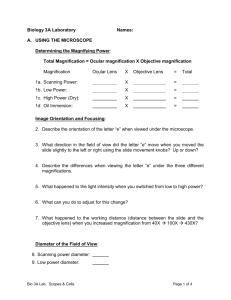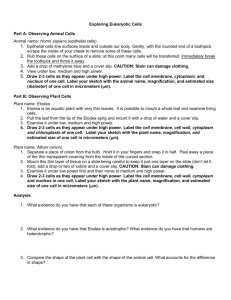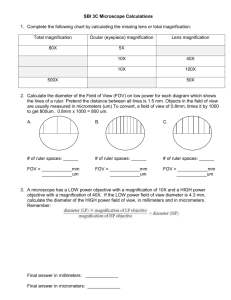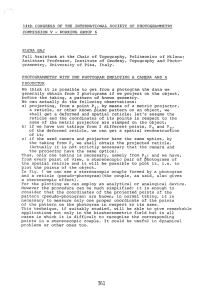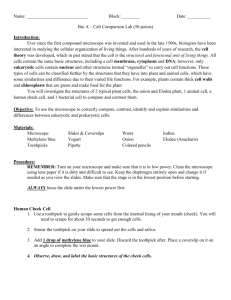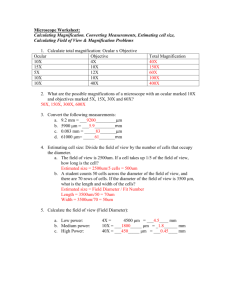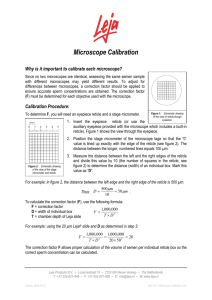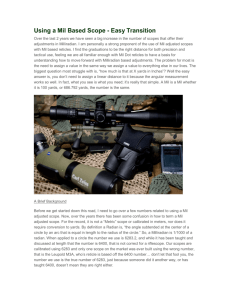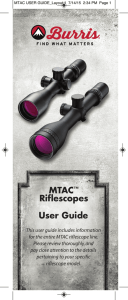Biology 3A Lab: Scopes and Cells Worksheet
advertisement
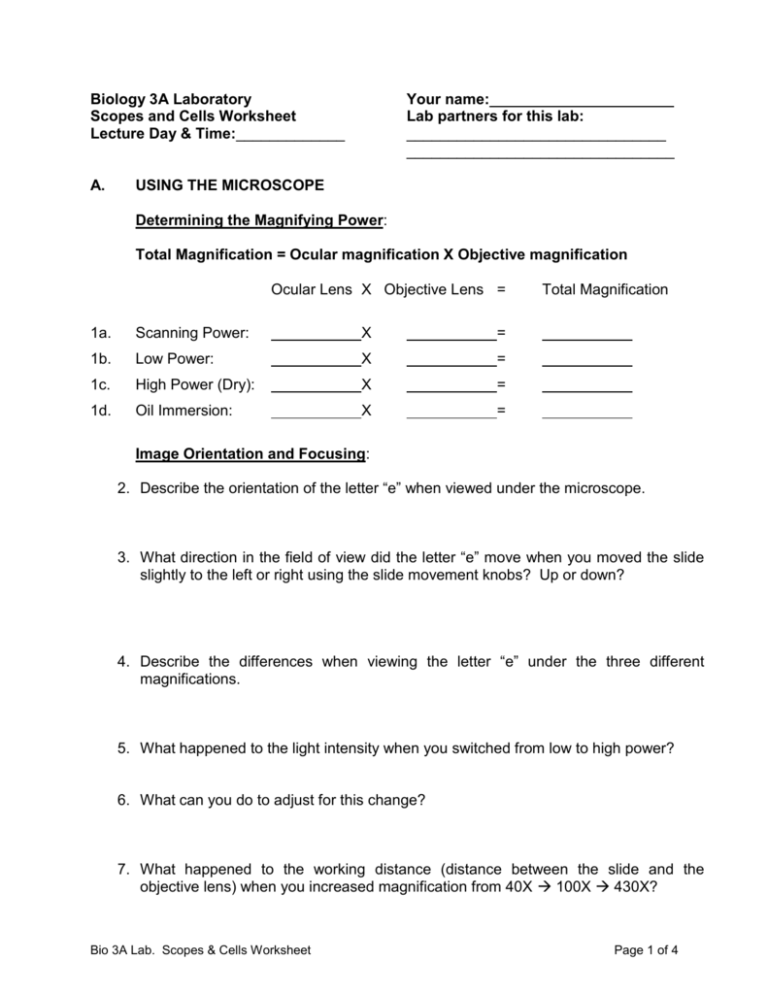
Biology 3A Laboratory Scopes and Cells Worksheet Lecture Day & Time:_____________ A. Your name:______________________ Lab partners for this lab: _______________________________ ________________________________ USING THE MICROSCOPE Determining the Magnifying Power: Total Magnification = Ocular magnification X Objective magnification Ocular Lens X Objective Lens = 1a. Scanning Power: X = 1b. Low Power: X = 1c. High Power (Dry): X = 1d. Oil Immersion: X = Total Magnification Image Orientation and Focusing: 2. Describe the orientation of the letter “e” when viewed under the microscope. 3. What direction in the field of view did the letter “e” move when you moved the slide slightly to the left or right using the slide movement knobs? Up or down? 4. Describe the differences when viewing the letter “e” under the three different magnifications. 5. What happened to the light intensity when you switched from low to high power? 6. What can you do to adjust for this change? 7. What happened to the working distance (distance between the slide and the objective lens) when you increased magnification from 40X 100X 430X? Bio 3A Lab. Scopes & Cells Worksheet Page 1 of 4 Diameter of the Field of View: 8. Scanning power diameter: 9. Low power diameter: 10. Calculate the high power diameter: Show your work. 11. Convert the high power diameter to μM. Show your work. 12. What are the advantages of knowing the diameter of the field of view at a given magnification? Calibration of the reticle: 13. Using the 4x objective, what is the length of 2 mm in reticle units? a. Divide 2 mm by your measurement b. What is the length of one reticle unit at 40x (=Total Mag)? 14. Using the 10x objective, what is the length of 1 mm in reticle units? a. Divide 1 mm by your measurement b. What is the length of one reticle unit at 100x (=Total Mag)? 15. What is the length of one reticle unit at 400x (=Total Mag)? a. In mm? b. In μM? Depth of Field: 16. Are all three colored threads in focus at low power? 17. Why should you always focus an object on a lower power before focusing on high power? Bio 3A Lab. Scopes & Cells Worksheet Page 2 of 4 B. PROKARYOTIC AND EUKARYOTIC CELLS 18. Clearly draw and label the three different morphological bacterial types. 19. Draw the structure of Nostoc and Anabaena 20. Clearly draw and label all visible components (cell membrane, cytoplasm, nucleus, nuclear envelope, mitochondria and nucleolus) of your cheek cell. What is the average size of your cheek cells? What is the approximate size of the mitochondria? 21. Clearly draw and label all visible components (cell wall, cytoplasm, nucleus, nuclear envelope, mitochondria and nucleolus) of an onion cell. What is the size an onion cell? The nucleus? 22. Clearly draw and label all visible components (cell wall, cytoplasm, chloroplast and area of vacuole) of an Elodea cell. What is the size of an Elodea cell? The chloroplast? 22a. Can you see nuclei in the Elodea cells? Which are larger, chloroplasts or nuclei? Bio 3A Lab. Scopes & Cells Worksheet Page 3 of 4 22b. What is the speed of a chloroplast? 23. Clearly draw and label all visible components of your protists. Include any other protists that are provided by you instructor. 24. If your lab partner missed today’s lab, how would you tell them to distinguish plant cells from animal cells when viewed through a microscope. 25. Briefly explain why the onion leaf did not possess any chloroplasts. C. UNKNOWN IDENTIFICATION 26. Unknown Sample Letter: 27. Write a short report (of course it has to be typed, don’t even ask) on the overall description of the cell type you observed and attach it to your worksheets. NOTES for your unknown goes below: Based on the above, my unknown specimen is a: Prokaryote Eukaryote (Circle One) If the specimen is a eukaryote, it is a(n): Bio 3A Lab. Scopes & Cells Worksheet Plant Animal (Circle One) Protist Page 4 of 4
